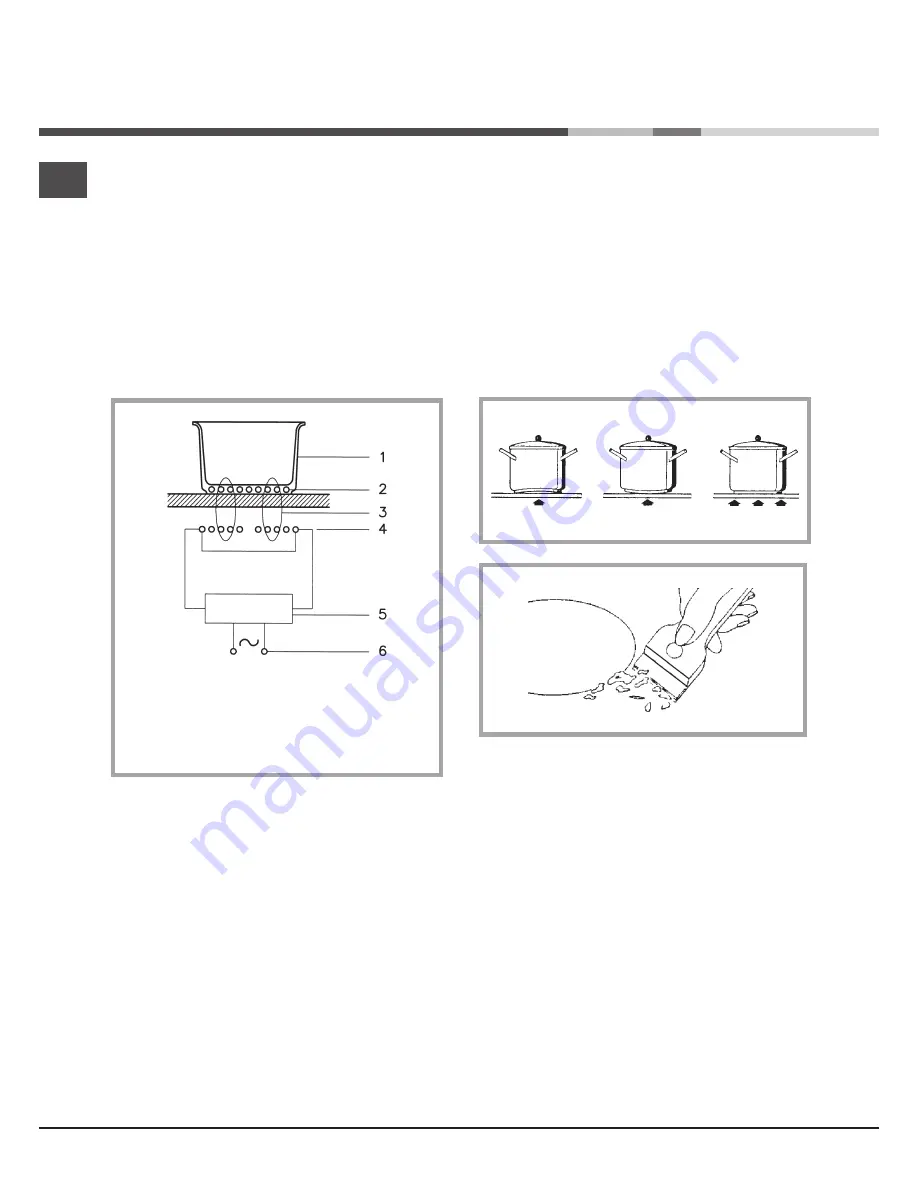
6
GB
Maintenace (Fig. 4)
By means of a scraper immediately remove any
alluminium foil bits, food spills, grease splashes, sugar
marks and other high sugarcontent food from the
surface in order to avoid damaging the hob.
Subsequently clean the surface with some paper towel
and SIDOL or STANFIX, rinse with water and dry by
means of a clean cloth.
Under no circumstance should sponges or abrasive
cloths be used; also avoid using aggressive chemical
detergents such as oven sprays and spot removers.
DO NOT USE STEAM CLEANERS
Fig.2
NO
NO
YES
Fig.3
- when the hob is in use keep all magnetizable objects
away (credit cards, floppy disks, calculators and so on)
- do not use any alluminium foil or place any foodstuffs
wrapped in alluminium foil directly on the hob
- do not place any metal objects such as knives, forks,
spoons and lids on the hob surface as they will heat up
- when cooking in a nonstick pan without seasoning,
do not exceed 1-2 minutes’ pre-heating time
- when cooking food that may easily stick, start at a
low power output level and then slowly increase while
regularly stirring.
- after cooking is finished, switch off using the control
provided (turn down to “0”), and do not rely on the
pan sensor.
Fig.1
1 - vessel
2 - induced current
3 - magnetic field
4 - inductor
5 - electronic circuit
6 - power supply
Cooking vessels (Fig. 3)
- a magnet attracting vessel may be a suitable vessel
for induction cooking
- prefer vessels which are especially declared to be
suitable for induction cooking
- flat and thickbottomed vessels
- a vessel with a 20 centimeter diameter ensures the
maximum exploitation of power
- a smaller vessel reduces power exploitation, but does not
cause any energy loss We would anyhow not recommend
the use of vessels with diameters smaller than 10 cm.
- stainless-steel vessels with multilayer or ferritic
stainless-steel bottoms when specifically suited for
induction cooking
- cast iron preferably enamel bottomed vessels to avoid
scratching the pyroceram surface
- we do not recommend the use of any glass, ceramic,
earthenware, alluminium, copper or non-magnetic
(austenitic) stainless-steel vessels.
Summary of Contents for N321IX
Page 9: ...11 Notes ...



























